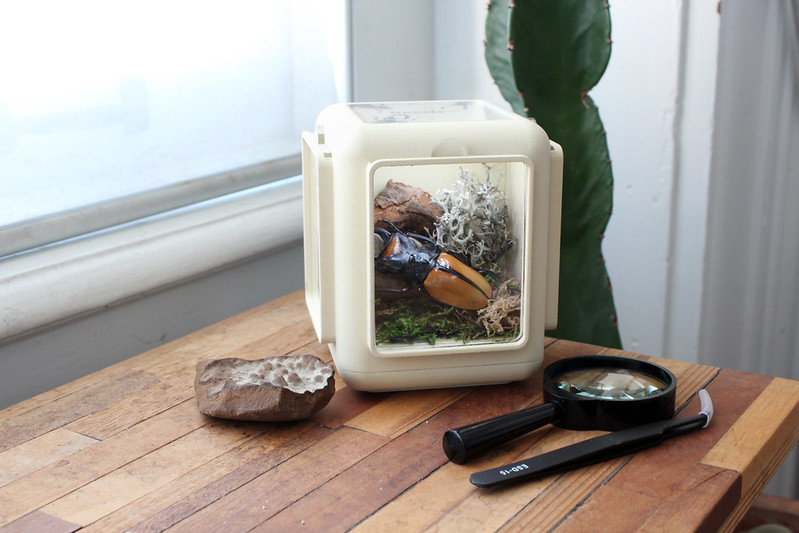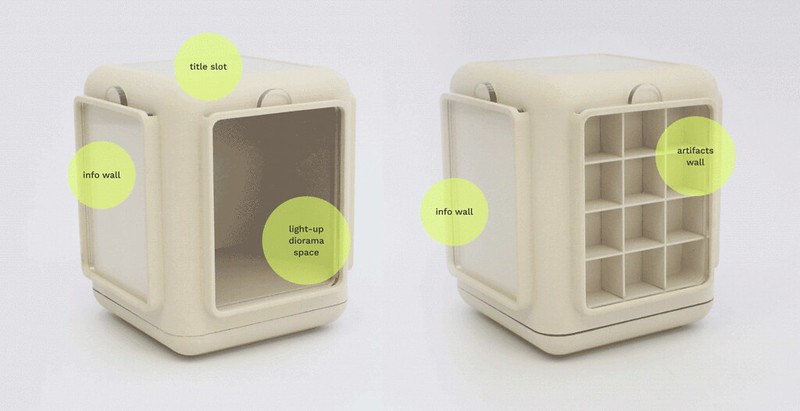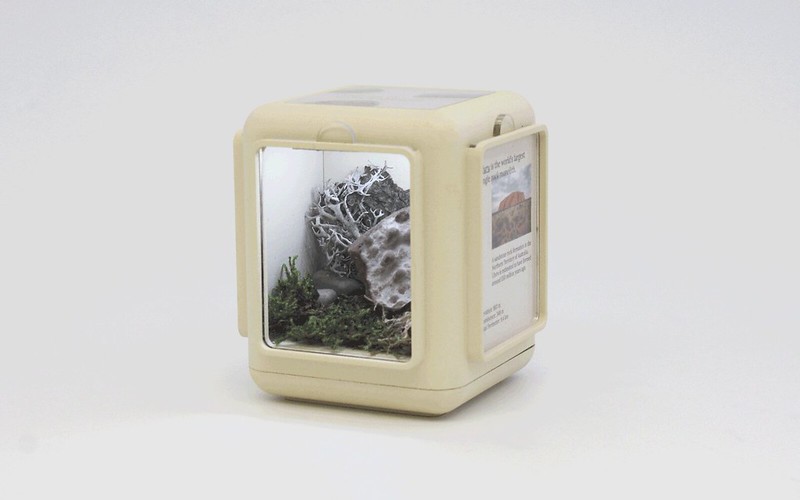nano
Alice Fang and Emily Zhou (2021)nano is a collection and curation toolkit that encourages people to explore their niche interests and build a personal museum around them. A joint senior capstone by CMU Design undergraduates Emily Zhou and Alice Fang, the nano project aims to encourage informal learning through making, and inspires an interest and appreciation in science and nature. The framework of nano encompasses a physical kit and web interface, and by collecting artifacts, conducting their own research, and creating informative print content, people can then piece together their personalized micro museum as a lasting object that continues to display and inform others on the topic of their choice.
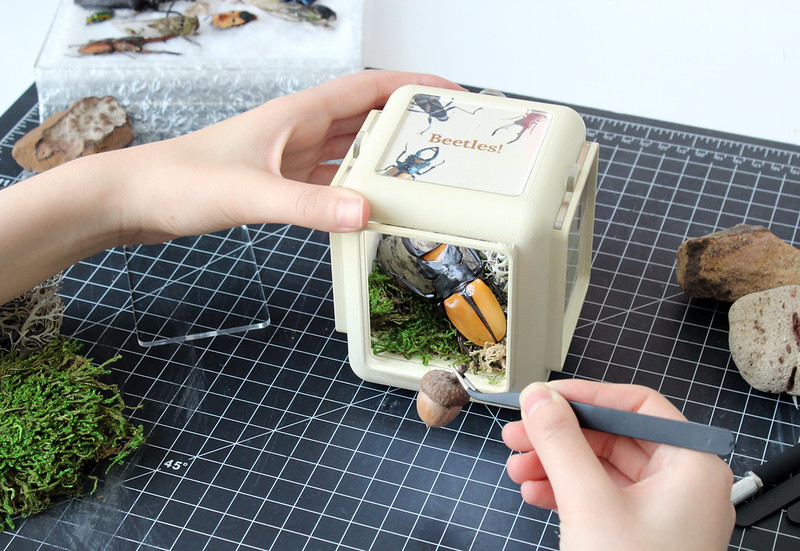
The physical kit includes the micro museum frame, a series of tools, and a booklet. The frame is a 4” x 4” x 5” rectilinear form that displays an internally contained diorama on the front face, a collection wall on the back face, and print information on the remaining three faces. To help support the collection and curation process, the kit also includes commonly-used artifacts and tools in science research practices, such as a magnifying glass, scalpel, curved forceps, and a smart-phone macro lens attachment. In particular, the macro lens attachment enables close-up photography for use in the creation of informational print content. The booklet gives an overview of the entire kit, as well as tips and tricks for building a diorama and some diorama ideas.
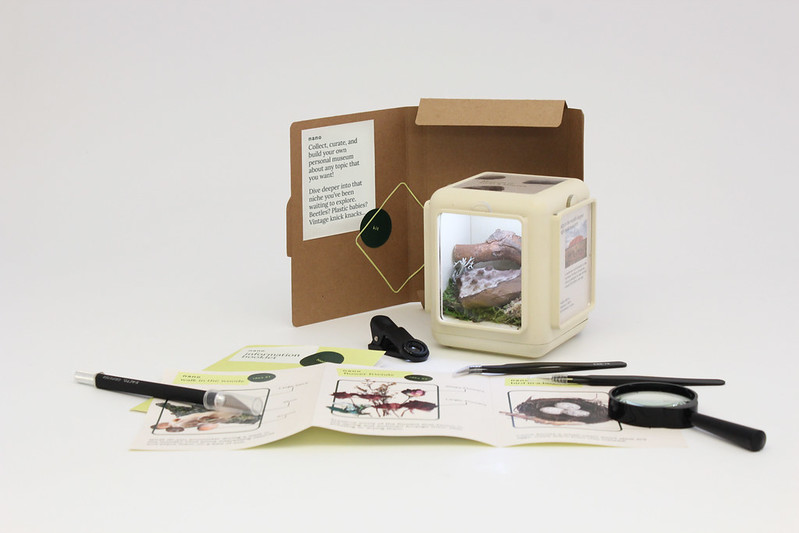
The accompanying web interface provides a space where people can design and print out labels, diagrams, and other print materials for their museum. The hope is that some of the practices with the physical kit, ie. looking closely with a magnifying glass and taking macro photography, can be placed into the web tool to create printable visuals. The web interface also contains a gallery space to allow people to share the different and unique museums that they have built, as a digital collection of collections.
With this project, Zhou and Fang aimed to incite curiosity and create a space where people can collect and curate objects about things that they find interesting. In this way, learning is not a passive process/experience, as it would be in a traditional museum gallery experience. They write: “We hope that through a hands-on, DIY framework, and through the act of building and collecting, learning is something that is fun and personal—and with the display characteristic of nano, that other people can discover interest in new topics as well.”
nano was supported by Grant #2021-048 from the Frank-Ratchye Fund for Art @ the Frontier.
